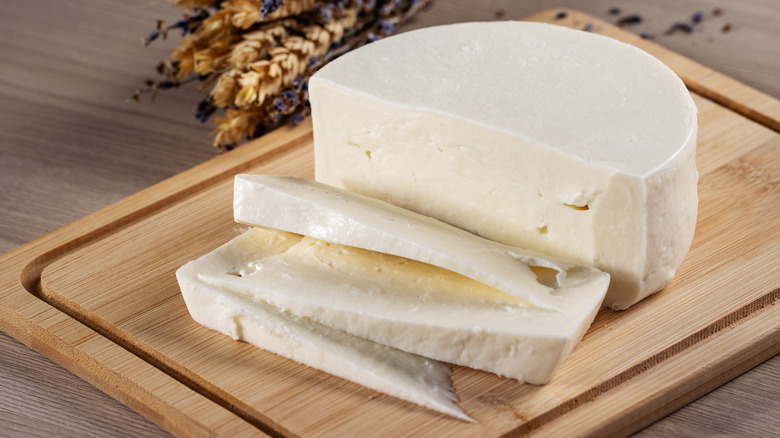The Best Way To Store Queso Fresco In Your Fridge
Incredibly soft, milky and crumbly, queso fresco — which literally translates to "fresh cheese" – is frequently enjoyed with Mexican cuisine, though many consider Spain as its place of origin. It's traditionally made from raw cow milk (though it's usually made from pasteurized milk when sold in the United States) or sometimes even a blend of cow and goat milk. This beautifully mild, light, and refreshing delight — which is often compared to feta – packs just the right touch of acidity to make even the greatest cheese skeptics question their life choices. If you've ever tried dreaming up clever ways to use leftover cotija cheese or queso fresco before it goes bad, then you are likely aware of how remarkably well it pairs with nachos, enchiladas, street tacos, and even salads. And let's not even get started on the fact that, unlike most cheeses, it's resistant to melting, which makes it perfect for grilling. Who said that the best grilled cheese requires multiple types of cheese?
But despite all the praise, queso fresco isn't flawless, with its greatest drawback being how quickly it spoils. It can last for up to a week or two unopened, but once it's out of its packaging, you've only got around five days before it has the potential to go bad. (And that's if you decide to store it at all: the FDA suggests not even saving queso fresco leftovers once you've opened the original packaging.) That's also assuming it stays refrigerated the whole time. Leave it at room temperature for more than a couple of hours, and Listeria – bacteria capable of contaminating a variety of foods — could attack it like it's their last meal. So it's safe to conclude that proper storage is crucial to extend its already short lifespan for as long as possible.
Maintaining the right temperature makes all the difference
According to the FDA, queso fresco is best consumed fresh. But if you plan to save it for later, there are a few important steps you need to follow to store it safely, the first of which is keeping it at the right temperature. Say you've just come back from the store with a fresh package. Don't even think about leaving it out of the fridge. Instead, put it in the fridge straight away so it's kept cool at 40 degrees Fahrenheit or below. In general, it will remain safe as long as you maintain the temperature sweet spot to keep your refrigerator on. If, however, you've kept it for more than two hours at a higher temperature than what the guidelines suggest, it's not worth the risk, so just throw it away.
On the other hand, if you have some leftovers, seal them in an airtight container or wrap them tightly in a plastic bag, and refrigerate them. It's best to consume it as soon as possible. Meanwhile, if you don't plan to use it anytime soon, then freezing is always a good way to go. While this might cause some textural changes, the flavor will mostly remain the same. But you'll get an extra two months of shelf life, in return. Once you decide to use it again, just move it to the fridge and let it thaw overnight.

